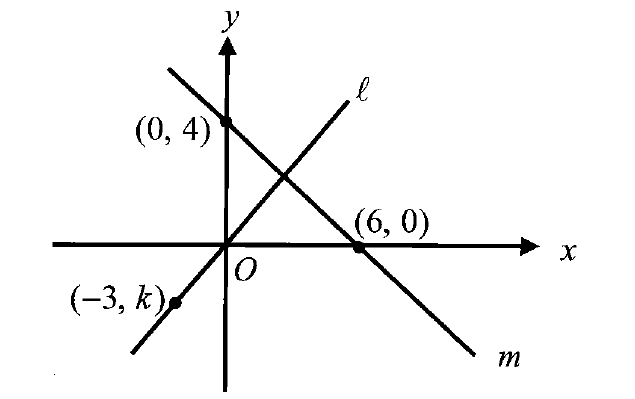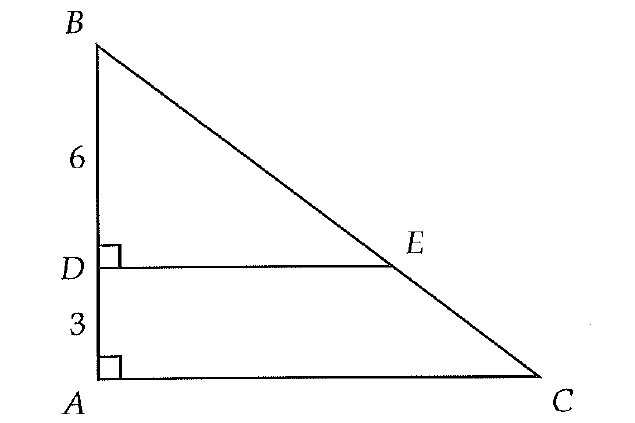ARITHMETIC PROGRESSION
A sequence of numbers is called arithmetic progression or arithmetic sequence where the difference between any two consecutive terms will be same along with sequence.
Example :
4, 8, 12, 16, 20, 24, 28, 32, 36,..................
8 - 4 = 4
12 - 8 = 4
16 - 12 = 4
20 - 24 = 4
In the above sequence of numbers, the difference between any two consecutive terms is 4 along the sequence. So, the above sequence of numbers is arithmetic sequence.
Formulas Relating Arithmetic Progression
General term or nth term of an arithmetic progression :
an = a1 + (n - 1)d
where 'a1' is the first term and 'd' is the common difference.
Formula to find the common difference :
d = a2 - a1
Formula to find number of terms in an arithmetic progression :
n = [(l - a1) / d] + 1
where 'l' is the last term, 'a1' is the first term and 'd' is the common difference.
General form of an arithmetic progression :
a1, (a1 + d), (a1 + 2d), (a1 + 3d),.........
Question 1 :
The first term of an A.P is 6 and the common difference is 5. Find the arithmetic progression its general term.
Solution :
a1 = 6
d = 5
Arithmetic Progression :
a1, (a1 + d), (a1 + 2d), (a1 + 3d),....................
Substitute 6 for a1 and 5 for d.
6, (6 + 5), (6 + 2 ⋅ 5), (6 + 3 ⋅ 5),....................
6, 11, 16, 21,....................
General Term :
an = a1 + (n - 1)d
Substitute 6 for a1 and 5 for d.
an = 6 + (n - 1)5
an = 6 + 5n - 5
an = 5n + 1
Question 2 :
Find the common difference and 15th term of an arithmetic progression :
125, 120, 115, 110,...............
Solution :
a1 = 125
a2 = 120
Common Difference :
d = a2 - a1
d = 120 - 125
d = -5
15th Term :
an = a1 + (n - 1)d
Substitute 15 for n, 125 for a1 and -5 for d.
a15 = 125 + (15 - 1)(-5)
a15 = 125 + (14)(-5)
a15 = 125 - 70
a15 = 55
So, the 15th term of the given arithmetic progression is 55.
Question 3 :
Which term of the arithmetic progression 24, 23¼, 22½, 21¾, ……… is 3?
Solution :
a1 = 24
d = a2 - a1 = 23¼ - 24 = -3/4
Let 3 be the nth term of the given arithmetic progression.
Then,
an = 3
a1 + (n - 1)d = 3
Substitute 24 for a1 and -3/4 for d.
24 + (n - 1)(-3/4) = 3
96/4 - 3n/4 + 3/4 = 3
(96 - 3n + 3) / 4 = 3
(-3n + 99) / 4 = 3
Multiply each side by 4.
-3n + 99 = 12
Subtract 99 from each side.
-3n = -87
Divide each side by -3.
n = 29
Therefore, 3 is 29th term in the given arithmetic progression.
Question 4 :
Find the 12th term of the arithmetic progression ;
√2, 3√2, 5√2,…………
Solution :
a1 = √2
a2 = 3√2
Common Difference :
d = a2 - a1
d = 3√2 - √2
d = 2√2
12th Term :
an = a1 + (n - 1)d
Substitute 12 for n, √2 for a1 and 2√2 for d.
a12 = √2 + (12 - 1)(2√2)
a12 = √2 + (11)(2√2)
a12 = √2 + 22√2
a12 = 23√2
So, the 12th term of the given arithmetic progression is 23√2.
Question 5 :
Find the 17th term of the arithmetic progression :
4, 9, 14,…………
Solution :
a1 = 4
a2 = 9
Common Difference :
d = a2 - a1
d = 9 - 4
d = 5
17th Term :
an = a1 + (n - 1)d
Substitute 17 for n, 4 for a1 and 5 for d.
a17 = 4 + (17 - 1)(5)
a17 = 4 + (16)(5)
a17 = 4 + 80
a17 = 84
So, the 17th term of the given arithmetic progression is 84.
Question 6 :
How many terms are in the following arithmetic sequence ?
7, 11, 15,……………483
Solution :
a1 = 7
d = a2 - a1 = 11 - 7 = 4
Formula to find number of terms in an arithmetic progression :
n = [(l - a1) / d] + 1
Substitute 7 for a1 and 4 for d.
n = [(483 - 7) / 4] + 1
n = [476 / 4] + 1
n = 119 + 1
n = 120
Therefore, there are 120 terms in the given arithmetic sequence.
Question 7 :
How many terms are there in the following Arithmetic progressions?
-16, -12, -8,……………16
Solution :
a1 = -16
d = a2 - a1
d = -12 - (-16)
d = -12 + 16
d = 4
Formula to find number of terms in an arithmetic progression :
n = [(l - a1) / d] + 1
Substitute 16 for l, -16 for a1 and 4 for d.
n = [{16 - (-16)} / 4] + 1
n = [{16 + 16} / 4] + 1
n = [32 / 4] + 1
n = 8 + 1
n = 9
Therefore, there are 9 terms in the given arithmetic sequence.
Question 8 :
The 10th and 18th terms of an arithmetic sequence are 41 and 73 respectively. Find the 27th term
Solution :
|
a10 = 41 a1 + (10 - 1)d = 41 a1 + 9d = 41 -----(1) |
a18 = 73 a1 + (18 - 1)d = 73 a1 + 17d = 73 -----(2) |
Solving (1) and (2),
a1 = 5
d = 4
27th Term :
a27 = a1 + (27 - 1)d
a27 = a1 + 26d
Substitute 5 for a1 and 4 for d.
a27 = 5 + 26(4)
a27 = 5 + 104
a27 = 109
So, the 27th term of the arithmetic progression is 109.
Question 9 :
Find n so that the nth terms of the following two arithmetic progressions are equal.
1, 7, 13, 19,................
and
100, 95, 90,................
Solution :
First Sequence :
a1 = 1
d = a2 - a1
d = 7 - 1
d = 6
Formula to find nth term :
an = a1 + (n - 1)d
Substitute 1 for a1 and 6 for d.
an = 1 + (n - 1)(6)
an = 1 + 6n - 6
an = 6n - 5
Second Sequence :
a1 = 100
d = a2 - a1
d = 95 - 100
d = -5
Formula to find nth term :
an = a1 + (n - 1)d
Substitute 100 for a1 and 5 for d.
an = 100 + (n - 1)(-5)
an = 100 - 5n + 5
an = 105 - 5n
Given : nth terms of the two arithmetic progressions are equal.
Then,
6n - 5 = 105 - 5n
Add 5n and 5 to each side.
11n = 110
Divide each side by 11.
n = 10
Question 10 :
How many two digit numbers are divisible by 13?
Solution :
Tow digit numbers :
10, 11, 12,………… 99
Find the two digit numbers divisible by 13.
The first two digit number divisible by 13 is
13
The second two digit number divisible by 13 is
13 + 13 = 26
The third two digit number divisible by 13 is
26 + 13 = 39
................
The last two digit number divisible by 13 is
91
Then, the two digit numbers divisible by 13 are
13, 26, 39,.......................91
In the above sequence, the difference between any two consecutive term is 13. So, the above sequence is an arithmetic progression.
Formula to find number of terms in an arithmetic progression :
n = [(l - a1) / d] + 1
Substitute 91 for l, 13 for a1 and 13 for d.
n = [(91 - 13) / 13] + 1
n = [78 / 13] + 1
n = 6 + 1
n = 7
Therefore, there are seven two digit numbers divisible by 13.
Kindly mail your feedback to v4formath@gmail.com
We always appreciate your feedback.
©All rights reserved. onlinemath4all.com
Recent Articles
-
Digital SAT Math Problems and Solutions (Part - 106)
Feb 04, 25 08:16 AM
Digital SAT Math Problems and Solutions (Part - 106) -
SAT Math Resources (Videos, Concepts, Worksheets and More)
Feb 04, 25 08:15 AM
SAT Math Resources (Videos, Concepts, Worksheets and More) -
Digital SAT Math Problems and Solutions (Part - 107)
Feb 04, 25 08:11 AM
Digital SAT Math Problems and Solutions (Part - 107)

